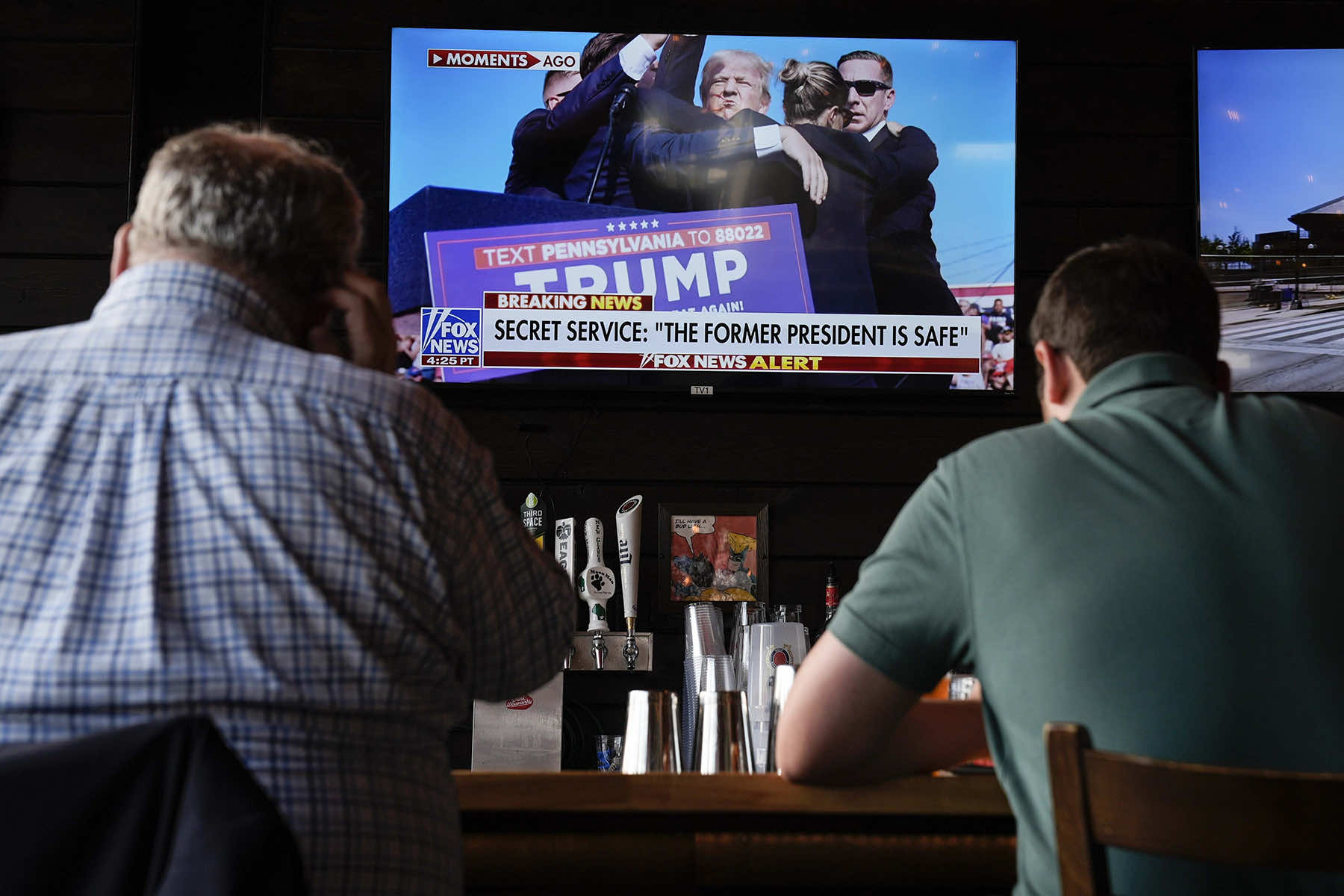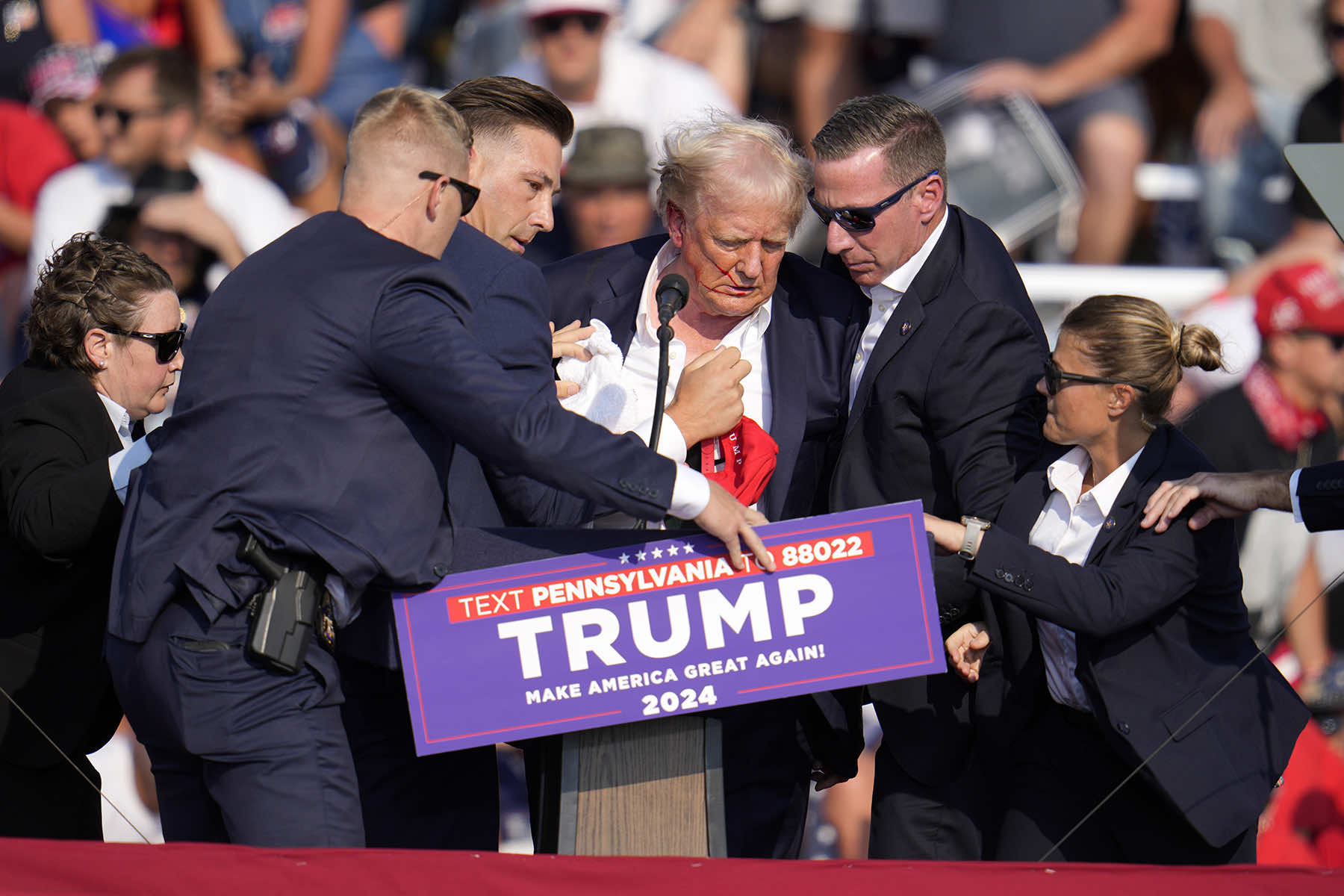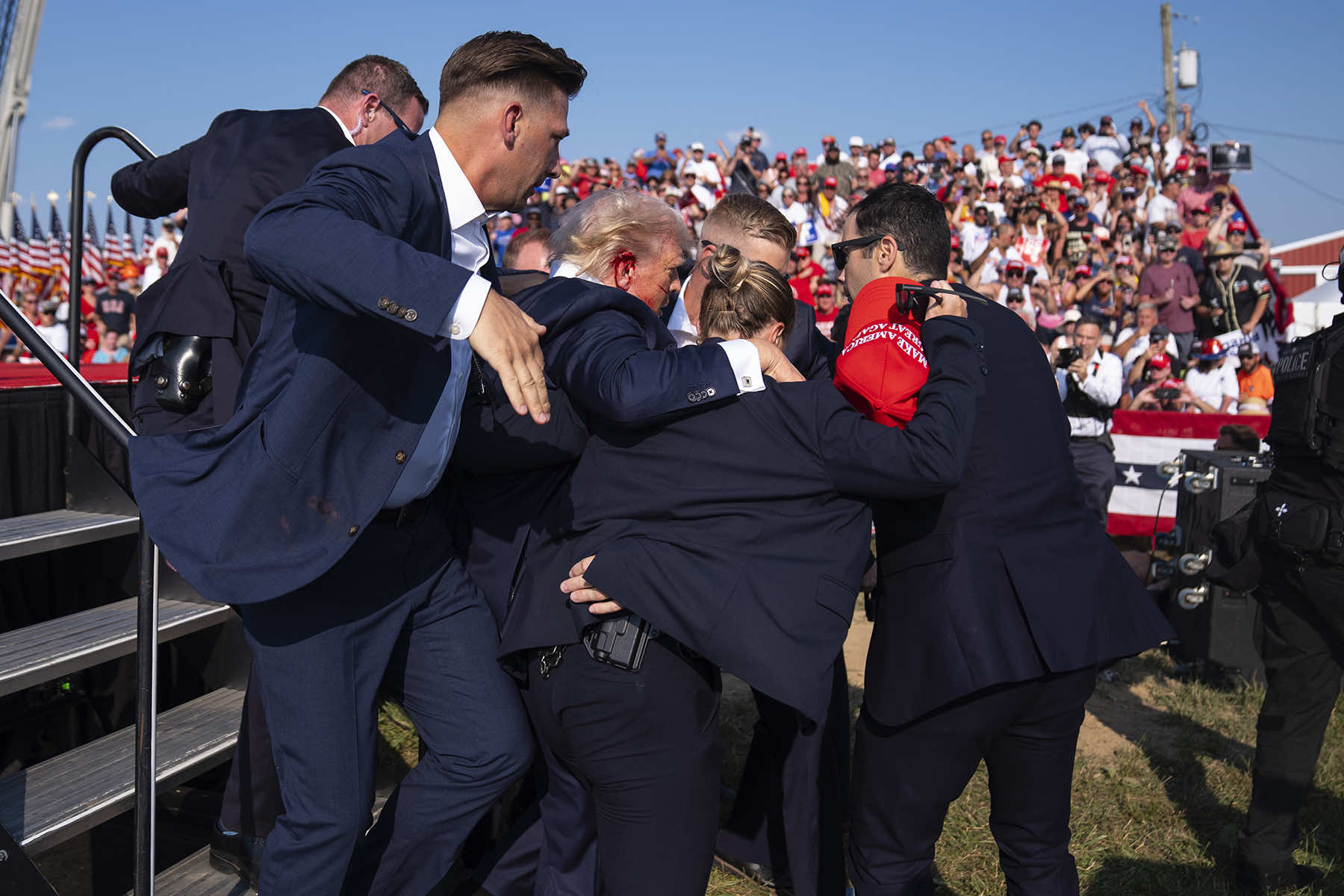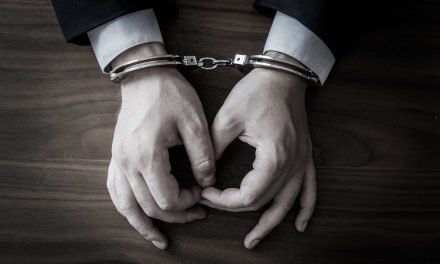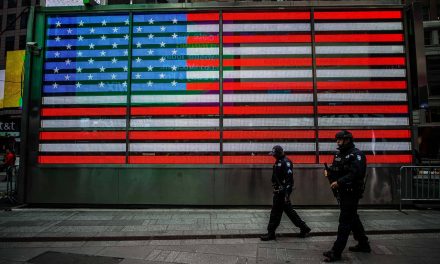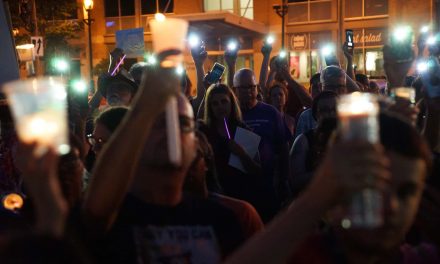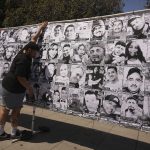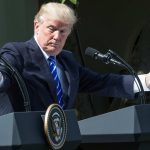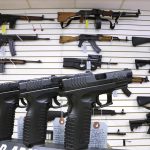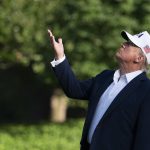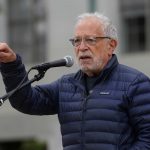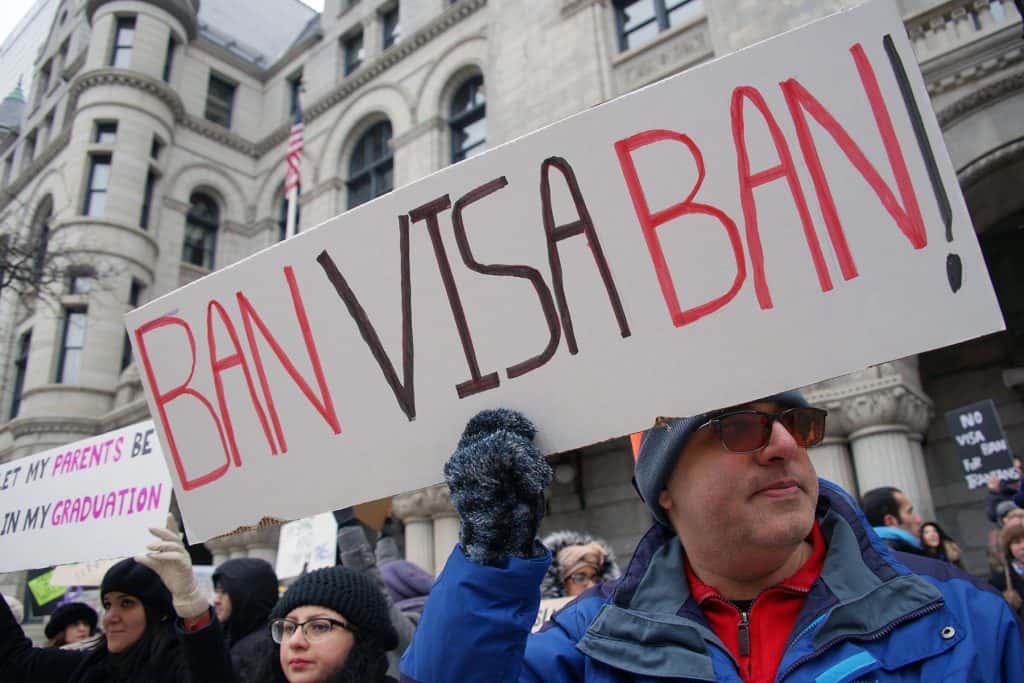
A year after the July 13, 2024, shooting at Donald Trump’s rally in Butler, Pennsylvania, there is still insufficient understanding of the event and its aftermath. MAGA loyalists, who see a deep state conspiracy around every corner, have been uncharacteristically silent despite obvious conspiracy questions about the incident.
There has been little public curiosity about the lack of explanation from the FBI or the Secret Service, or even from the national press. It is a pattern of silence, omission, and unexplained deviation from standard protocols.
Though candidate Trump returned quickly to public life after sustaining a minor ear injury from a sniper’s bullet, the speed of narrative closure, the absence of forensic transparency, and the apparent failure to release basic investigative documentation stand in stark contrast to historical precedent.
What remains is not a conspiracy theory, but an institutional void. It raises questions not only about how such an attack occurred, but why the national conversation around it ended so abruptly.
NO AUTOPSY, NO BALLISTICS, NO TRANSPARENCY
The shooter, 20-year-old Thomas Matthew Crooks, was killed on-site by law enforcement within moments of firing. Yet to date, no autopsy report has been made publicly available. Neither local authorities nor the FBI have released a coroner’s summary, ballistic trajectory reports, or time-of-death documentation — all standard releases in federal cases involving political violence.
In the 1981 assassination attempt on President Ronald Reagan, the public received detailed timelines, bullet trajectory analysis, and hospital documentation. The assailant, John Hinckley Jr., was not killed, which allowed a full legal process. But even if Crooks’ death precluded prosecution, forensic accountability does not end with the absence of a trial.
The lack of public forensic reconstruction — no official map of shooter position, shell casing placement, or impact analysis — breaks sharply from the Department of Homeland Security’s own post-incident reporting guidelines, which mandate transparency in high-profile security breaches “where systemic failure may be a contributing factor.”
A BREACH, BUT NO INQUIRY
Crooks was positioned on a rooftop, 148 yards from the stage. He fired multiple rounds from an AR-style rifle before being neutralized. According to publicly available footage, Secret Service agents evacuated Trump seconds after the shot struck him, but questions about how Crooks gained rooftop access, with no sniper cover watching known perches, remain unanswered.
No formal DHS or Secret Service internal report has been published, but a congressional task force later issued a public assessment detailing major protective failures. Compare this to the 2005 incident in Georgia, where agents prevented an attempted assassination of George W. Bush. A full security audit was made public less than two months later. In the Trump case, even the most basic structural evaluation of the perimeter has not been disclosed.
“Security planning for open-air rallies includes full rooftop sweeps and lockdown of vertical perches. That’s baseline protocol,” said a retired senior Secret Service official familiar with presidential advance teams. “The idea that this location was unsecured is not just unlikely. It’s unthinkable.”
WHERE ARE THE WITNESSES?
Beyond the presidential motorcade and campaign staff, the most glaring silence comes from the crowd. Roughly 7,000 people were present at the Butler rally. But aside from a few recycled media clips and selectively aired cell phone videos, there has been no mass outpouring of independent testimony. Few attendees have spoken at length in press interviews, and almost none of the raw video from the crowd itself has been authenticated and released in full.
This differs sharply from the 2017 Las Vegas shooting, where within days, hundreds of cellphone videos were circulating online, accompanied by interviews, timeline reconstructions, and amateur forensics. In Butler, by contrast, the record is remarkably thin. No timestamped footage from the shooter’s side, no audio analysis from the gunfire’s echo, no eyewitness mapping of the moment the first shot rang out.
Anecdotally, several rally attendees have claimed they were asked by agents to hand over their devices for data extraction. While this is not uncommon in active investigations, no warrant records have surfaced to confirm these seizures, and no legal explanation for indefinite data withholding has been provided.
THE MEDIA VACUUM
Perhaps the most unusual aspect of the Butler shooting is not what happened, but how quickly it disappeared from public view.
The Butler shooting vanished from front-page coverage within days, and while scattered follow-ups appeared later, no major outlet pursued a sustained investigation or televised special. Despite a former president being wounded in a live assassination attempt, an event unprecedented in modern U.S. history, the media ecosystem treated it more like a passing story than a national trauma.
Compare this with the coverage of the January 6 Capitol breach, which triggered over a year of primetime hearings, documentaries, and investigative panels. Even the failed 2008 shoe-throwing incident involving George W. Bush in Baghdad received more long-tail media analysis.
News cycles are not bound by law, but editorial choices matter. A wound to such a prominent political figure would, by historical precedent, result in wall-to-wall scrutiny. Yet here, we saw almost none.
It could be argued that the facts were resolved swiftly with the shooter dead and the threat neutralized. But resolution does not equal understanding. The speed with which national conversation turned away from Butler left little opportunity to examine context, motive, security, or even the physical evidence.
INSTITUTIONAL SILENCE
Requests submitted under the Freedom of Information Act (FOIA) to the FBI, DHS, and Secret Service have thus far yielded few responsive documents. Several have been denied under national security exemptions. Others remain in open status with no anticipated completion date. No press-credentialed outlet has been granted access to internal investigation summaries. This stonewalling is atypical for high-profile cases where suspects are deceased and trials are not pending.
When Hinckley shot Reagan, the public saw courtroom footage, heard expert psychiatric testimony, and received formal press briefings from the FBI and White House doctors. When Trump was shot, Americans received a two-minute statement, a few press pool images, and were expected to move on.
COMPARISON TO PRECEDENT
In security terms, this incident is less like the 1981 Reagan shooting and more like the 1963 JFK assassination. Not in scope or outcome, but in post-event ambiguity. In both cases, a shooter allegedly acted alone from an elevated position. In both, forensic inconsistencies lingered. And in both, initial explanations were offered rapidly while deeper analysis lagged or was discouraged.
But even the Warren Commission, flawed as it was, at least existed. A year later, and there has been no bipartisan panel, no independent audit, no formal review of the shooter’s radicalization, procurement of weapons, or tactical planning.
THE BURDEN OF PROOF
There is a saying in political journalism that has never felt more relevant. Some people require no proof to believe a lie, but demand endless proof to accept the truth.
The Butler incident, in its swift closure and absence of transparent accountability, has created a vacuum in which speculation breeds not because people are irresponsible, but because institutions have been.
In a constitutional republic where trust in federal institutions continues to erode, silence is not neutral. It is an active policy. It shapes public memory and dictates whether an event lives in daylight or is left to the shadows.
Whatever the truth of July 13, until the government and its agencies are willing to treat the Butler shooting with the forensic and procedural rigor it warrants, the questions surrounding the event’s authenticity will not go away. Nor should it.
© Photo
Gene J. Puskar (AP), Matt Rourke (AP), and Evan Vucci (AP)

